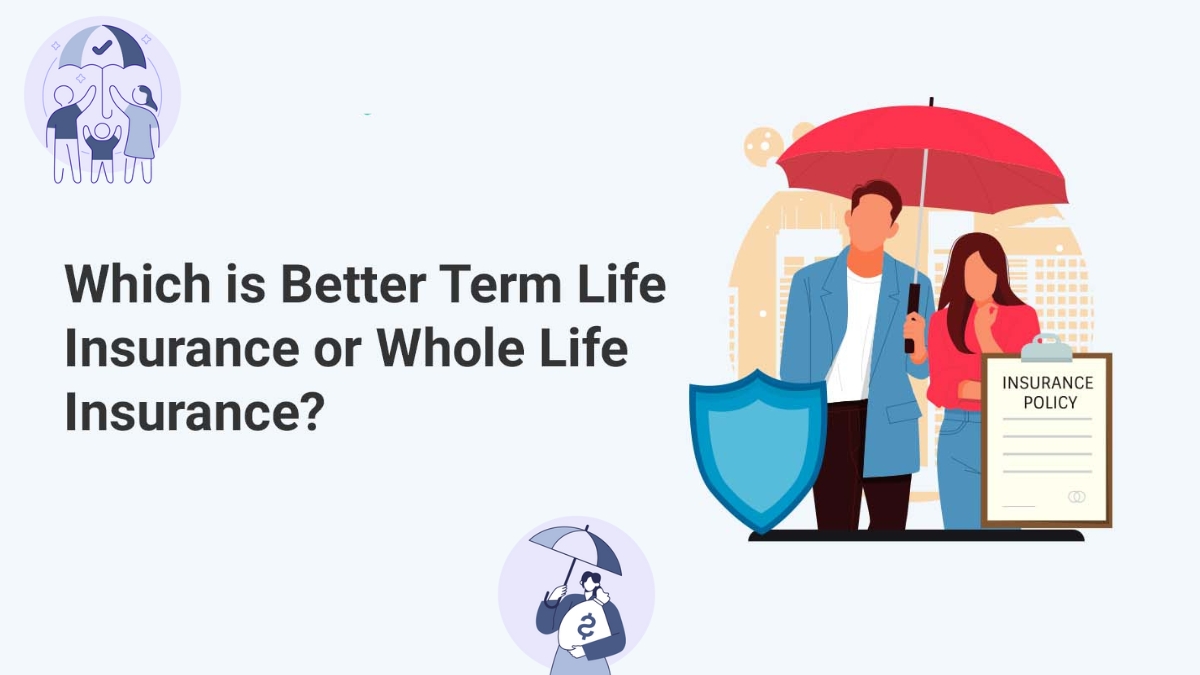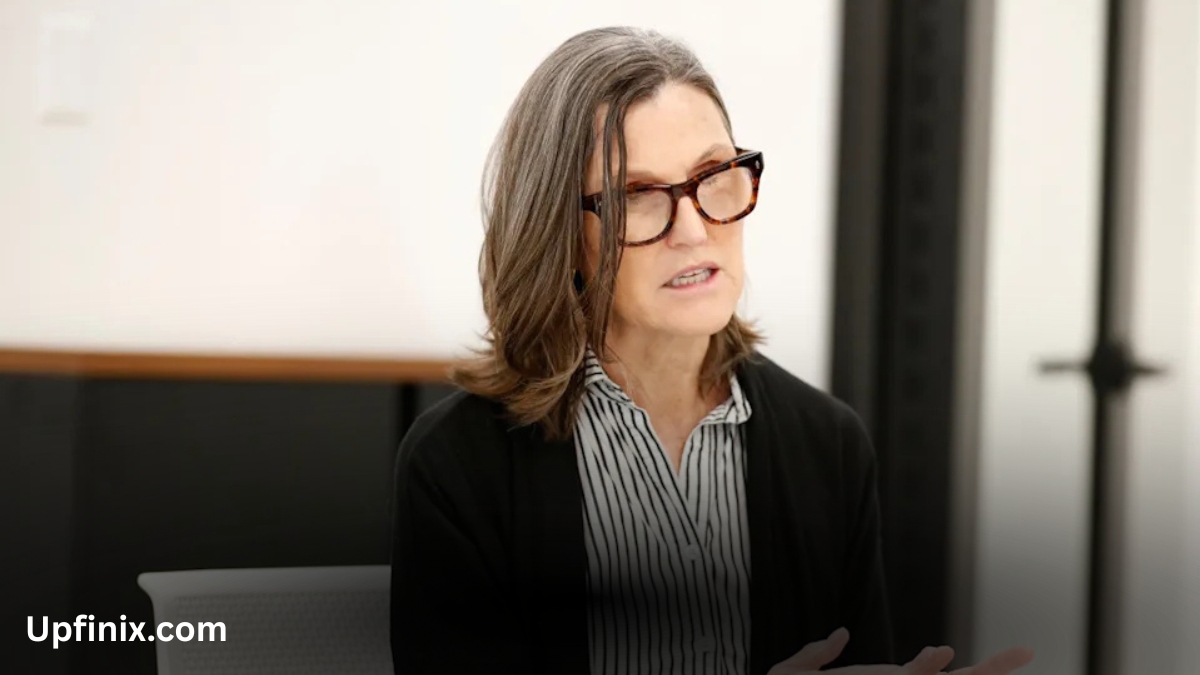Choosing between term life insurance and whole life insurance can feel like navigating a maze of financial jargon and endless options. You’re not alone if you’re wondering, “Which is better and why: term or whole life insurance?” The answer depends on your unique needs, budget, and long-term goals. In this comprehensive guide, we’ll break down the differences between these two types of life insurance, explore their pros and cons, compare key factors, and provide real-world examples to help you decide. By the end, you’ll have the clarity you need to choose the policy that’s right for you and your family.
Table of Contents
Understanding Term Life Insurance
What is Term Life Insurance?
Term life insurance provides coverage for a set period—typically 10, 20, or 30 years. If you pass away during this term, your beneficiaries receive a death benefit. If you outlive the policy, the coverage expires, and no benefit is paid unless you renew or purchase a new policy.
Pros of Term Life Insurance
- Affordable Premiums: Term policies are often significantly cheaper than whole life insurance, making them ideal for budget-conscious individuals.
- Simplicity: With no additional features like cash value, term insurance is straightforward and easy to understand.
- Customizable Terms: You can tailor the term length to match specific financial obligations, like a mortgage or your children’s education.
Cons of Term Life Insurance
- Temporary Coverage: Once the term ends, you’re left without insurance unless you renew—at potentially higher rates due to age or health changes.
- No Savings Component: Unlike whole life insurance, term policies don’t build cash value, so there’s no investment benefit.
Understanding Whole Life Insurance
What is Whole Life Insurance?
Whole life insurance is a type of permanent life insurance that lasts your entire life, as long as you keep paying the premiums. Beyond the death benefit, it includes a cash value component that grows over time, offering a savings or investment element.
Read More: – Stimulus Payments in 2025: A Comprehensive Guide
Pros of Whole Life Insurance
- Lifetime Protection: Your beneficiaries are guaranteed a payout, no matter when you pass away, provided premiums are paid.
- Cash Value Growth: Part of your premium builds a cash reserve that grows tax-deferred and can be accessed via loans or withdrawals.
- Predictable Premiums: Payments stay consistent, simplifying long-term budgeting.
Cons of Whole Life Insurance
- Higher Costs: Premiums are much more expensive than term insurance, which can strain finances.
- Complexity: The cash value and various riders (optional features) can make it harder to grasp fully.
- Modest Returns: Cash value growth is often slower than other investment vehicles like stocks or mutual funds.
Comparing Term and Whole Life Insurance
To answer “Which is better and why: term or whole life insurance?”, let’s compare them across four critical factors: cost, coverage duration, cash value, and flexibility.
1. Cost
- Term Life Insurance: Lower premiums make it accessible for most people. For example, a healthy 30-year-old might pay $20–$30 monthly for a $500,000, 20-year policy.
- Whole Life Insurance: Premiums are higher due to lifelong coverage and cash value. The same 30-year-old might pay $200–$300 monthly for a similar death benefit.
2. Coverage Duration
- Term Life Insurance: Covers a specific period, leaving you uninsured if you outlive it.
- Whole Life Insurance: Offers lifelong coverage, ensuring a payout whenever you pass away.
3. Cash Value Component
- Term Life Insurance: No cash value—purely a death benefit product.
- Whole Life Insurance: Builds cash value over time, acting as a forced savings tool you can tap into.
4. Flexibility
- Term Life Insurance: Highly flexible, letting you choose term length and coverage amount to suit temporary needs.
- Whole Life Insurance: Less flexible, as it’s designed for permanence, with changes often incurring fees.
| Feature | Term Life Insurance | Whole Life Insurance |
|---|---|---|
| Cost | Low premiums | High premiums |
| Coverage | Fixed term (e.g., 20 years) | Lifetime |
| Cash Value | None | Yes, grows over time |
| Flexibility | High | Low |
Also Read: – The Ultimate Guide to Crypto in 2025: Trends & Tips
Real-World Scenarios: Which Works Best?
Let’s explore two case studies to see how term life insurance and whole life insurance apply in real life.
Case Study 1: The Young Family
Background: Mike and Lisa, both 32, have two kids (ages 5 and 7) and a 25-year mortgage. They want coverage to protect their family if one of them passes away unexpectedly.
Best Choice: Term life insurance. A 25-year, $750,000 policy ensures their mortgage is covered and their kids are supported until they’re independent. The low premiums (around $40/month each) let them save for college funds and retirement.
Why? Their need is temporary—once the mortgage is paid and the kids are grown, they may not need as much coverage. Term insurance fits their budget and timeline perfectly.
Case Study 2: The Wealthy Retiree
Background: Susan, 55, is a high-net-worth individual with a $5 million estate. She wants to leave a legacy and offset estate taxes for her heirs.
Best Choice: Whole life insurance. A $2 million policy provides a guaranteed death benefit, and the cash value grows tax-deferred, offering liquidity if needed. Premiums are steep ($1,500/month), but she can afford them.
Why? Lifetime coverage ensures her heirs receive a payout, and the cash value helps with estate planning—a key concern for wealthy individuals.
FAQs
1. What’s the Main Difference Between Term and Whole Life Insurance?
The primary difference lies in duration and features. Term life insurance covers you for a set period (e.g., 20 years) and offers only a death benefit. Whole life insurance lasts your entire life and includes a cash value component that grows over time. If you need temporary, affordable coverage, term is simpler. If you want lifelong protection with a savings element, whole life might appeal more.
This distinction matters because it ties directly to your goals. A young parent might choose term to cover their working years, while someone planning their estate might opt for whole life’s permanence.
2. Is Whole Life Insurance Worth the Extra Cost?
It depends on what you value. Whole life insurance costs more because it combines insurance with a savings feature. If you’re seeking lifelong coverage and like the idea of building cash value for emergencies or retirement, the higher premiums might be justified. For example, a $250,000 whole life policy might cost $150/month, while a term policy of the same amount costs $15/month—but the term policy expires.
If your budget is tight or you only need coverage for a specific time, term life insurance is often the smarter buy. Assess your long-term needs and financial discipline—whole life’s value shines if you use its cash component wisely.
3. Can I Switch from Term to Whole Life Insurance?
Yes, many insurers offer conversion options. If you buy a term life insurance policy with a conversion rider, you can switch to whole life insurance later without a new medical exam. This is handy if your health declines or your needs evolve—like wanting permanent coverage as you age.
For instance, a 35-year-old with a 20-year term policy might convert at 50 when premiums would otherwise rise. Check your policy terms—some limit conversion to a specific window (e.g., first 10 years).
4. What Happens If I Outlive My Term Life Insurance?
If you outlive your term life insurance policy, coverage ends, and no death benefit is paid. You’re left uninsured unless you renew, convert, or buy a new policy. Renewal premiums will be higher due to your age—say, from $25/month at 30 to $100/month at 60—and health issues could increase costs further.
To avoid this, plan your term length carefully. A 30-year term might suit someone starting a family at 30, expiring when they’re 60 and financially secure. Alternatively, save the premium difference to self-insure later.
5. How Does Cash Value in Whole Life Insurance Work?
In whole life insurance, part of your premium funds a cash value account that grows tax-deferred, typically at a guaranteed rate (e.g., 3–5% annually). You can borrow against it, withdraw it, or use it to pay premiums—but this reduces the death benefit unless repaid.
For example, after 10 years on a $500,000 policy, you might have $20,000 in cash value. Borrowing $10,000 could lower the benefit to $490,000 until repaid. It’s a safety net, but growth is slower than stocks, so weigh it against other investments.
6. Which is Better for Young Adults: Term or Whole Life?
Term life insurance often wins for young adults. At 25 or 30, your income might be limited, but your responsibilities—like rent, student loans, or a new family—are high. A $1 million, 20-year term policy might cost $30/month, offering robust protection without breaking the bank.
Whole life insurance could make sense if you’re wealthy early or want forced savings, but its $300/month premium for the same coverage might strain your budget. Most young adults benefit from term’s affordability, freeing cash for other goals like homeownership.
Conclusion
So, which is better and why: term or whole life insurance? There’s no one-size-fits-all answer. Term life insurance shines for its affordability and flexibility, making it ideal for temporary needs like raising kids or paying off debt. Whole life insurance excels for lifelong coverage and cash value, suiting those with long-term financial planning or estate goals.
Consider your budget, how long you need coverage, and whether you want a savings component. A young family might lean toward term, while a high-net-worth individual might choose whole life. Whatever you pick, align it with your life stage and priorities—consulting a financial advisor can seal the deal.
What do you think? Have a preference between term and whole life insurance? Share your thoughts in the comments or sign up for our newsletter for more financial insights!










